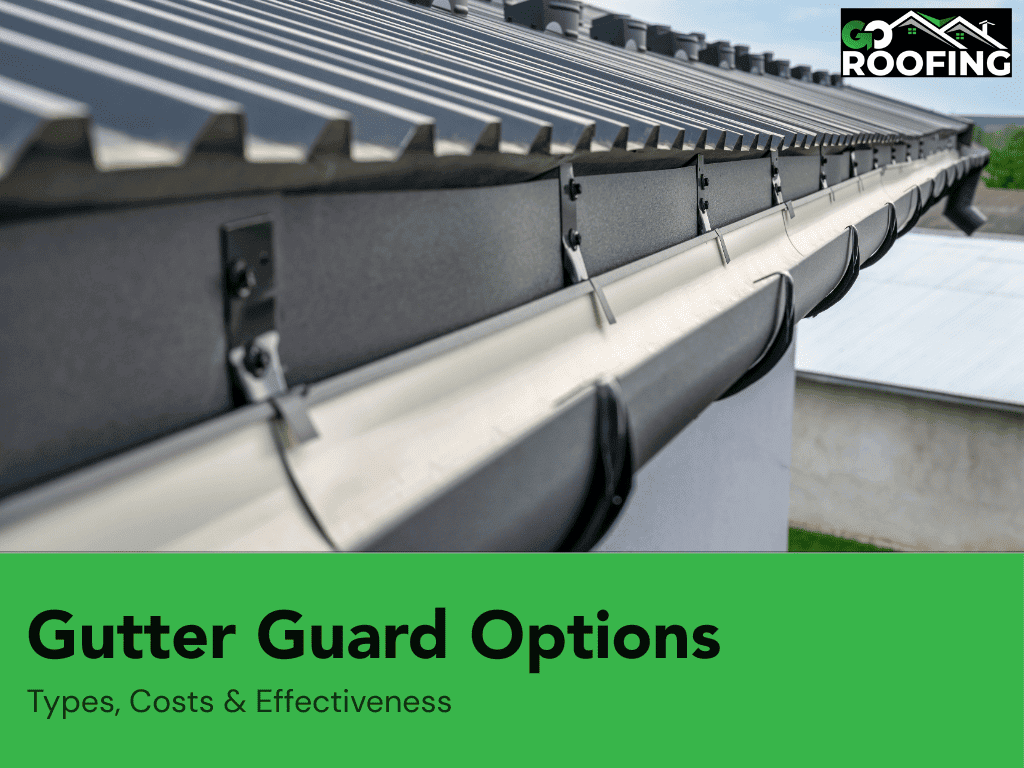Clogged gutters are a headache, and cleaning them is even worse.
That’s where gutter guards come in—but not all are created equal. Some work like a charm, while others barely make a difference.
We’ve seen what holds up and what falls apart, so here’s a breakdown of the best options, their costs, and whether they’re worth it.
Key Notes
- Micro-mesh guards block most debris but cost more than basic screens.
- All gutter guards need some kind of maintenance, but amounts vary significantly.
- If you’re looking for longevity metal guards outlast plastic in extreme weather conditions.
What Are Gutter Guards?
Gutter guards sit on top of or inside your gutters, acting as a barrier against debris while letting rainwater flow through. They’re designed to reduce clogs, extend the life of your gutter system, and cut down on maintenance.
But not all gutter guards work the same way, and some might not be the best fit for your home.
1. Screen Gutter Guards
These are metal or plastic sheets with holes, designed to block larger debris while allowing water through. They’re one of the most affordable options, generally costing between $3 to $6 per linear foot.
While they are easy to install, they’re not perfect. Small debris can still slip through, and screens need occasional cleaning.
Pros:
- Budget-friendly
- Simple installation
Cons:
- Needs maintenance
- Can warp or clog over time
2. Micro-Mesh Gutter Guards
Micro-mesh guards use ultra-fine screens to block even tiny debris. They’re highly effective but more expensive, running about $9 per linear foot.
Installation is best left to professionals, and they need occasional rinsing to stay clear.
Pros:
- Blocks almost all debris
- Low maintenance
Cons:
- Higher cost
- Professional installation recommended
3. Reverse Curve Gutter Guards
Designed to use surface tension, these guards let water curve into the gutter while leaves slide off.
They cost between $3.50 and $6.50 per foot and work well in heavy rain, but installation is complex, and they’re visible from the ground.
Pros:
- Works well in high rainfall
- Keeps out most debris
Cons:
- Expensive installation
- Can be an eyesore
4. Brush Gutter Guards
Think of a giant bottle brush sitting inside your gutter. Water flows through while leaves get stuck on top.
This gutter guard option is cheap at around $3–$4.50 per foot and easy to install, but they tend to trap debris, meaning more cleaning.
Pros:
- Inexpensive
- DIY-friendly
Cons:
- Regular maintenance
- Not ideal for heavy rain areas
5. Foam Gutter Guards
Foam inserts sit inside the gutter, allowing water to pass while blocking leaves. They’re affordable usually costing $2–$3.50 per foot, but they break down over time and can trap moisture, leading to mold and mildew.
Pros:
- Low cost
- Simple installation
Cons:
- Short lifespan
- Prone to clogging and mold
Gutter Screens vs. Gutter Guards
While people tend to use the terms interchangeably, there’s a difference:
- Gutter Screens: A type of gutter guard with perforations to block large debris. They’re cheap but need maintenance.
- Gutter Guards: These encompass various designs, including micro-mesh and reverse curve, offering more comprehensive protection.
Which one’s better? Micro-mesh guards outperform standard screens in most cases, but screens can work well if you’re on a budget and don’t mind occasional cleaning.

Pros and Cons of Gutter Guards
If you are going to be installing gutter guards, here are the advantages and disadvantages they bring to the table:
Pros:
- Less Gutter Cleaning: Reduces the need to clear out gutters manually.
- Prevents Water Damage: Stops clogs that lead to overflows and leaks.
- Extends Gutter Lifespan: Prevents rust and sagging caused by standing water.
- Pest Deterrence: Blocks rodents and insects from nesting in gutters.
Cons:
- Upfront Cost: Quality guards aren’t cheap.
- Maintenance Isn’t Zero: Some guards still need occasional cleaning.
- Installation Costs: Some types call for professional fitting.
Frequently Asked Questions
What are the best mesh gutter guards and do they work?
Yes. Mesh guards, particularly micro-mesh, are some of the best at keeping debris out. They’re durable, need minimal upkeep, and last for years. If you’re looking for the best long-term solution, these are a solid choice.
Do I need gutter guards?
If you live in an area with lots of trees, heavy rain, or deal with constant gutter clogs, then yes you need gutter guards. If you don’t mind cleaning your gutters multiple times a year, you might skip them. But for most homeowners, the investment saves time and hassle in the long run.
Metal gutter guards vs plastic: which lasts longer?
When it comes to longevity, metal wins. Stainless steel and aluminum guards hold up better against weather, pests, and general wear. Plastic versions are cheaper but break down faster, especially in extreme temperatures.
Conclusion
Gutter guards can help keep debris out, but they’re not a set-it-and-forget-it solution.
No matter which type you choose, occasional maintenance is still part of the deal. Micro-mesh guards offer the most protection, while budget-friendly screens work if you don’t mind some upkeep.
The bigger concern: What happens if water starts backing up. Clogged gutters don’t just overflow—they can send water straight under your roof, leading to leaks, rot, and costly damage.
If your roof is showing signs of wear, waiting too long can turn a minor fix into a major expense. Get a free quote today.

